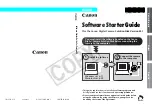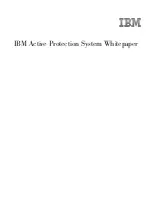
Porting existing scripts to Flash Player 7
19
You have to make the following changes:
•
If the called SWF file is published for Flash Player 7, include
System.security.allowDomain
or
LocalConnection.allowDomain
in the called SWF file, using exact domain-
name matching.
•
If the called SWF file is published for Flash Player 6, modify the called file to add or change a
System.security.allowDomain
or
LocalConnection.allowDomain
statement, using exact
domain-name matching, as shown in the code examples earlier in this section. You can publish
the modified file for either Flash Player 6 or 7.
•
If the called SWF file is published for Flash Player 5 or earlier, port the called file to
Flash Player 6 or 7 and add a
System.security.allowDomain
statement, using exact
domain-name matching, as shown in the code examples earlier in this section.
(LocalConnection objects aren’t supported in Flash Player 5 or earlier.)
HTTP to HTTPS protocol access between SWF files
As discussed in the previous section, rules for cross-domain and subdomain access have changed
in Flash Player 7. In addition to the exact-domain matching rules now being implemented, you
must explicitly permit files hosted at sites using a secure protocol (HTTPS) to be accessed by files
hosted at sites using an insecure protocol. Depending on whether the called file is published for
Flash Player 7 or Flash Player 6, you must implement either one of the
allowDomain
statements
(see
“Cross-domain and subdomain access between SWF files” on page 17
), or use the new
LocalConnection.allowInsecure Domain
or
System.security.allowInsecureDomain()
statements.
Warning:
Implementing an
allowInsecureDomain()
statement compromises the security offered
by the HTTPS protocol. You should make these changes only if you can’t reorganize your site so that
all SWF files are served from the HTTPS protocol.
The following code shows an example of the kinds of changes you might have to make:
// Commands in a Flash Player 6 SWF file at https://www.someSite.com
// to allow access by Flash Player 7 SWF files that are hosted
// at http://www.someSite.com or at http://www.someOtherSite.com
System.security.allowDomain("someOtherSite.com");
my_lc.allowDomain = function(sendingDomain) {
return(sendingDomain=="someOtherSite.com");
}
// Corresponding commands in a Flash Player 7 SWF file
// to allow access by Flash Player 7 SWF files that are hosted
// at http://www.someSite.com or at http://www.someOtherSite.com
System.security.allowInsecureDomain("www.someSite.com",
"www.someOtherSite.com");
my_lc.allowInsecureDomain = function(sendingDomain) {
return(sendingDomain=="www.someSite.com" ||
sendingDomain=="www.someOtherSite.com");
}
You might also have to add statements like these to your files if you aren’t currently using them.
A modification might be necessary even if both files are in same domain (for example, a file in
http://www.domain.com is calling a file in https://www.domain.com).
Summary of Contents for FLASH MX 2004 - ACTIONSCRIPT
Page 1: ...ActionScript Reference Guide...
Page 8: ...8 Contents...
Page 12: ......
Page 24: ...24 Chapter 1 What s New in Flash MX 2004 ActionScript...
Page 54: ...54 Chapter 2 ActionScript Basics...
Page 80: ...80 Chapter 3 Writing and Debugging Scripts...
Page 82: ......
Page 110: ...110 Chapter 5 Creating Interaction with ActionScript...
Page 112: ......
Page 120: ...120 Chapter 6 Using the Built In Classes...
Page 176: ......
Page 192: ...192 Chapter 10 Working with External Data...
Page 202: ...202 Chapter 11 Working with External Media...
Page 204: ......
Page 782: ...782 Chapter 12 ActionScript Dictionary...
Page 793: ...Other keys 793 221 222 Key Key code...
Page 794: ...794 Appendix C Keyboard Keys and Key Code Values...
Page 798: ...798 Appendix D Writing Scripts for Earlier Versions of Flash Player...
Page 806: ...806 Appendix E Object Oriented Programming with ActionScript 1...
Page 816: ...816 Index...
















































